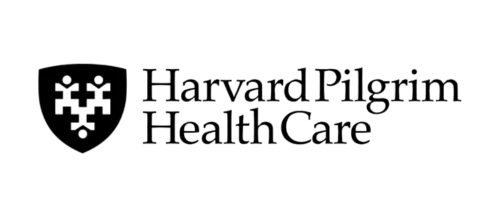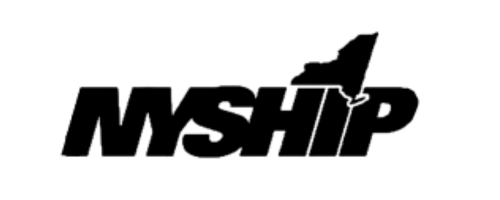Halcion Addiction: Signs and Symptoms
Halcion is a benzodiazepine, meaning that it has a high potential for abuse and those who use the drug regularly are liable to develop a physical dependency over time.
Halcion is the brand name of the generic drug triazolam, a prescription depressant/tranquilizer that is most used for treating severe insomnia and other sleep-related disorders. Halcion is a benzodiazepine, meaning that it has a high potential for abuse and those who use the drug regularly are liable to develop a physical dependency over time – even if they are taking the drug directly as prescribed by a medical professional.
What Does Halcion Do and How Does It Work?
Halcion seems to be a jack-of-all-trades in terms of the range of conditions it can treat, some of which include:
- Insomnia
- Panic attacks
- Anxiety-based disorders
- Aggression
- Schizophrenia
While it’s primarily used to treat insomnia, Halcion works as a central nervous depressant, so it can produce a range of therapeutic benefits depending on the condition being treated. Halcion works by stimulating GABA production in the brain. As one of the brain’s core neurotransmitter chemicals, GABA works with glutamate to keep brain activity running at an even keel. GABA slows activity, while glutamate speeds things up.
When brain activity levels run too fast, conditions like the ones listed above can develop. Halcion’s ability to slow things down accounts for its ability to provide relief. Despite this drug’s therapeutic benefits, Halcion abuse and Halcion addiction risks exist because of its ability to alter chemical activities in the brain. For these reasons, Halcion is a controlled substance with a Schedule IV drug classification.
Halcion Abuse Risks
Increasing Dosage Amounts
Because of its role as a central nervous system depressant, Halcion should only be used on a short-term basis, not to exceed 10 days. Exceeding prescription guidelines opens the door for Halcion abuse symptoms to develop. One of these symptoms is having to take larger and larger doses to keep experiencing the desired effects of the drug.
Halcion forces GABA-secreting cells in the brain to produce more GABA than they normally do. Over time, these cells become less sensitive to the drug, so your normal dosage amount loses effectiveness. At this point, users may increase their dosage amount or frequency. The problem with this is your brain will continue to adapt to Halcion’s effects, so you’ll have to keep increasing your dosage amounts for as long as you keep using this drug. These developments help pave the way for Halcion addiction to develop.
Withdrawal Effects

As your brain starts to tolerate or adapt to Halcion’s effects, it also becomes dependent on the drug’s effects to function normally. This means anytime the brain doesn’t get the amount of Halcion it needs, its ability to keep your body’s systems running smoothly is compromised. Withdrawal effects start to take shape as your brain loses its ability to regulate the body’s processes. Withdrawal effects also become more severe over time as the brain’s dependence on Halcion increases. As one of the key symptoms of a developing Halcion addiction, withdrawal effects are a primary driver of Halcion abuse.
Signs and symptoms to watch for include:
- Anxiety
- Sweating
- Muscle cramps
- Headaches
- Depression
- Insomnia
- Fever
- Shakiness
How Halcion Addiction Takes Hold
While Halcion is nowhere near as addictive as heroin or cocaine, the risk of addiction increases exponentially when abusing this drug. The effects of increasing your dosage amounts combined with withdrawal episodes will eventually start to destabilize other areas of the brain, particularly the brain’s reward system.
In addition to Halcion’s slowing effects on the central nervous system, it can produce a “high” effect or feelings of total calm and contentment. These effects trigger the reward system, which plays a central role in determining what a person believes they need to survive and cope with daily life, such as food, water, and human interaction. Unfortunately, ongoing Halcion abuse warps this area of the brain to the point where users become psychologically dependent on the drug’s effects.


Once psychological dependence takes hold, full-blown addiction is at work. At this point, someone addicted to Halcion believes they “need” the drug’s effects to make it through the day.
Signs and Symptoms of Halcion Addiction
- Loss of interest in activities once enjoyed
- Strong, persistent cravings for Halcion
- Obsessive thinking about getting and using the drug
- A decline in work or school performance
- Missing days at work or school
- Money problems
- Inability to stop or reduce Halcion use
- Neglecting important relationships
- Change in the social group
- A decline in personal hygiene and appearance
- Continuing to abuse Halcion despite negative consequences
When to Consider Getting Treatment Help
Unfortunately, there are no shortcuts to beating addiction. After so many weeks or months of Halcion abuse, the effects of the drug change the way your body and mind work. In like manner, recovery will take at least as long as it took for addiction to develop and may take longer. The bottom line is that, without needed treatment help, Halcion abuse symptoms will only worsen, and so will the addiction.
Whether you’re at the early stages of Halcion abuse or struggling with a full-blown addiction problem, it’s best to begin recovery in a medical detox program. Medical detox programs specialize in helping you make it through the detox stage. These programs use medication treatments to reduce withdrawal discomfort and provide 24-hour monitoring and supervision throughout the detox. From there, helping you undo the psychological effects of addiction becomes the next stage of the recovery process.
Absolute Awakenings – Start Healing Today
The admissions process at Absolute Awakening Treatment Center was carefully developed to be as stress-free as possible for our clients and their immediate family members. We understand that getting to the point of admittance is already exceedingly stressful when it comes to recovery. As soon as you give us a call, we will start developing a plan for intake, which will always include developing travel plans and conducting an over-the-phone assessment to determine which level of clinical care best suits your personal needs and requirements.
References
- Halcion (Triazolam): Uses, Dosage, Side Effects, Interactions, Warning. RxList. Published September 2, 2022. Accessed January 16, 2023. https://www.rxlist.com/halcion-drug.htm
- Controlled Substance Schedules. Accessed January 16, 2023. https://www.deadiversion.usdoj.gov/schedules/
- HALCION®, CIV Dosage and Administration (triazolam) | Pfizer Medical Information – US. Accessed January 16, 2023. https://www.pfizermedicalinformation.com/en-us/halcion/dosage-admin













